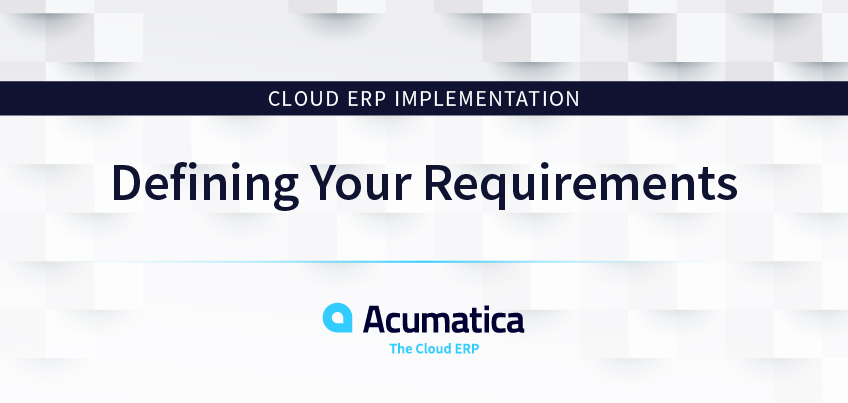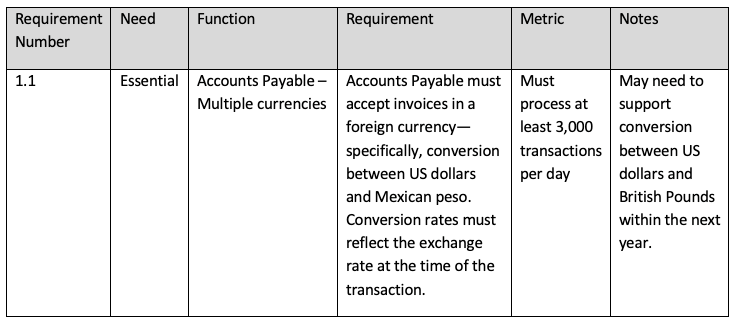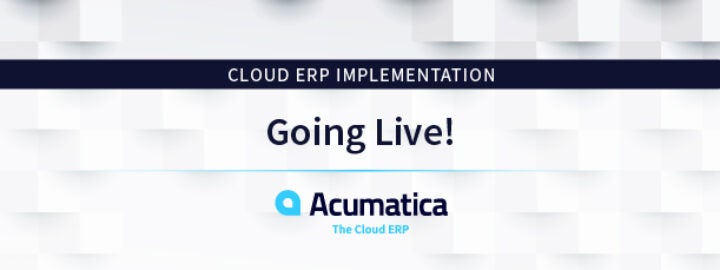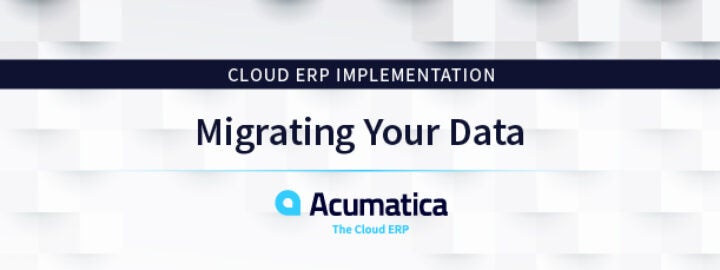No one walks into a cloud ERP implementation thinking it’s going to be easy, but Acumatica’s eight steps to implementation success help streamline the process. Acumatica’s Todd Kuhns explains step three today.

Reviewed: Jan, 2023
Before jumping into the third step of Acumatica’s eight steps to cloud ERP implementation success, let’s recap two important pre-steps. One, you must begin the implementation process by getting leadership and IT buy-in. Two, after leadership buy-in, it will take time and effort to thoroughly investigate your ERP choices and make your ERP selection.
Once you’ve successfully completed these pre-steps, the official first step of the implementation process is choosing your deployment option. The second step is assembling your implementation team.
Now, you’re ready for step three: defining your cloud ERP requirements.
Defining your cloud ERP requirements
For the purpose of today’s discussion, we’ll assume you’ve chosen Acumatica’s award-winning cloud ERP software. Acumatica’s partners are experts at ERP implementations and walk with you through every step of the cloud ERP implementation process, including today’s step, defining cloud ERP requirements.
Defining cloud ERP requirements involves documenting current business processes and functional gaps in your current system. You and your team will need to ask, what business process can we improve and how do we want our new Acumatica ERP system to function?
There are four general areas within which your cloud ERP requirements fall:
- Essential: Features or functions that are essential for the company to be able to operate
- Desirable: These functions would enhance the usefulness of the new system, if possible
- Not an immediate need: Functions that are not required at this time but will be necessary soon, depending on the company’s growth and advances in technology
- Nice to have: Non-essential functions that would make work easier
You and your team will then create a list, starting with essential functionality and then adding additional functionalities that are affordable and fit your timeline. By the time you’re done, you should have a list of features and functions expected to have when the projected is completed.
Below is one example of how to define your requirements.

Essential cloud ERP requirement checklist
Documenting your essential requirements may seem challenging, but Acumatica’s checklist can help. Here are the essential requirements:
- Existing or new customizations, workflows, and metrics that are expected to be included in the ERP
- Required integrations from the ERP to third-party business systems
- System and data handling requirements, including database backup and restore, system failover capabilities, network access, and security requirements
- Functionality gaps in the current system and processes that must be included in the new ERP system
- Accounting functionality requirements (such as Accounts Payable/Receivable, General Ledger, Chart of Accounts, Multiple Companies/Branches, Multi-Currency, Project Accounting, and Payroll Management)
- Industry-specific functionality requirements: Manufacturing (Scheduling, Bill of Materials, MRP); Distribution (Warehouse Management, Bin Location, Kitting, Batch/Serial Number Tracking, EDI, Multiple Units of Measure); CRM functionality requirements (Marketing Automation, Email Integration, Case Management, Customer Portal); eCommerce integration (B2C, B2B, Marketplaces)
- Reporting requirements (Customized Reporting, KPIs, Dashboards, Queries, Business Intelligence Capabilities)
- User roles, responsibilities, auditability, compliance, and governance
- Training requirements for users and administrators
- Support needs after adoption
- Scalability and additional functionality requirements for expected future growth
- Mobility requirements
It’s important to explain why each requirement is listed so those outside of the industry will understand the need. Remember to keep it simple, as unnecessary details complicate an already detailed process.
Acumatica customers + cloud ERP implementation = success
One of Acumatica customer Rebecca Ogle’s first decisions as CFO of Safety Management Group (SMG) was to replace the multiple solutions they were using to manage their operations. They searched for a comprehensive cloud-and-app based ERP, and SMG’s technology partner, Somerset Cloud ERP, suggested Acumatica.
After researching Acumatica’s cloud-based ERP solution, Rebecca, along with SMG executives, recognized that Acumatica offered everything they needed. “Acumatica now serves as the single source of truth for our business ensuring we are making the right decisions during this time.”
The company, which provides workplace safety consulting, training, staffing, program planning, and implementation, is now transformed and mobilized. The same can happen for you and your business. Contact our team today.
 Canada (English)
Canada (English)
 Colombia
Colombia
 Caribbean and Puerto Rico
Caribbean and Puerto Rico
 Ecuador
Ecuador
 India
India
 Indonesia
Indonesia
 Ireland
Ireland
 Malaysia
Malaysia
 Mexico
Mexico
 Panama
Panama
 Peru
Peru
 Philippines
Philippines
 Singapore
Singapore
 South Africa
South Africa
 Sri Lanka
Sri Lanka
 Thailand
Thailand
 United Kingdom
United Kingdom
 United States
United States














